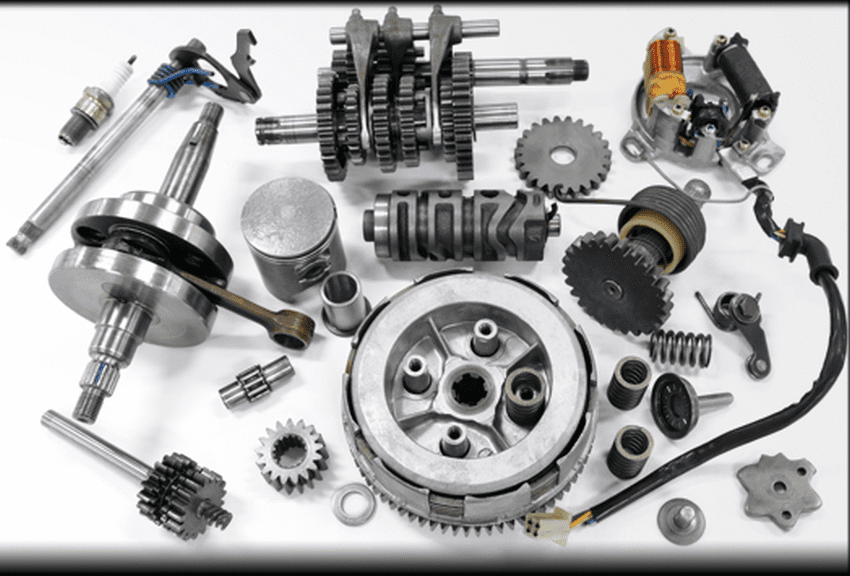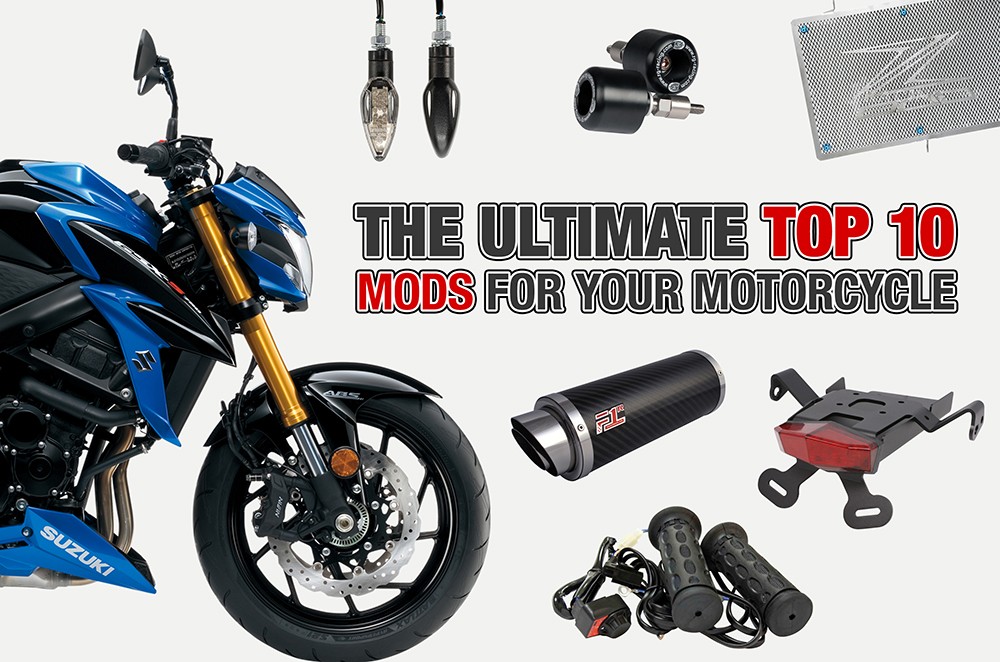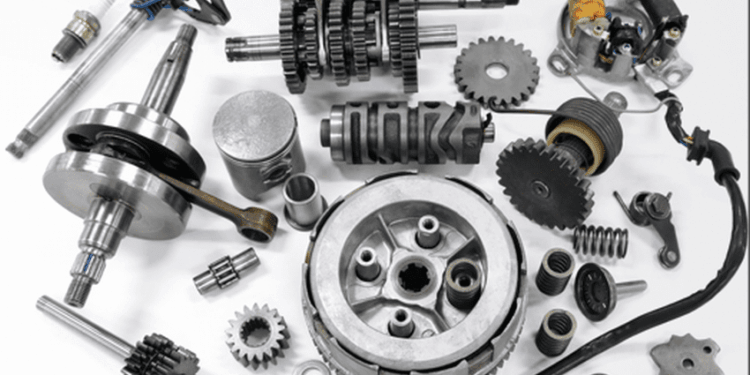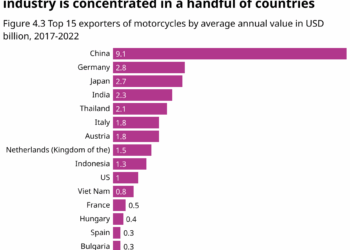Dive into the dynamic world of the motorcycle aftermarket parts market, where innovation meets customization and performance. From the evolution of this industry to the current trends shaping it, this topic offers a fascinating journey for enthusiasts and industry insiders alike.
As we delve deeper, let's uncover the key aspects that drive the aftermarket parts market and the factors influencing its growth.
Overview of the Motorcycle Aftermarket Parts Market
The motorcycle aftermarket parts industry has a rich history that dates back to the early days of motorcycling. Riders have always sought to customize and improve their bikes, leading to the creation of a thriving market for aftermarket parts.In recent years, the motorcycle aftermarket parts market has seen significant growth, fueled by the increasing popularity of motorcycling as a recreational activity.
Riders are now more inclined to personalize their bikes with high-quality aftermarket parts to enhance performance, style, and functionality.
Current Size and Growth Trends
- The global motorcycle aftermarket parts market is estimated to be worth billions of dollars, with steady growth projected in the coming years.
- Factors such as the rise in disposable income, technological advancements in aftermarket parts, and the growing number of motorcycle enthusiasts contribute to the market's expansion.
- E-commerce platforms have played a crucial role in the growth of the motorcycle aftermarket parts market, providing riders with easy access to a wide range of products from various manufacturers.
Key Players and Major Regions
- Some of the key players in the motorcycle aftermarket parts market include companies like Vance & Hines, Yoshimura, Akrapovič, and K&N Engineering.
- North America and Europe are among the major regions driving the demand for motorcycle aftermarket parts, with a strong presence of custom bike builders and a culture of motorcycle customization.
- Asia-Pacific is also emerging as a significant market for motorcycle aftermarket parts, with a growing number of riders looking to personalize their bikes.
Types of Motorcycle Aftermarket Parts
When it comes to upgrading motorcycles, aftermarket parts play a significant role in enhancing performance and aesthetics. There are various categories of aftermarket parts available for motorcycles, each serving a specific purpose and catering to different needs of motorcycle enthusiasts.
Performance Parts
- Performance Exhaust Systems: Upgrading the exhaust system can improve horsepower, torque, and overall engine performance.
- Air Filters: High-performance air filters allow better airflow, resulting in improved engine efficiency and power.
- Suspension Upgrades: Enhancing the suspension system can improve handling, stability, and overall ride quality.
Aesthetic Parts
- Custom Paint Jobs: Customizing the paint scheme can enhance the overall look of the motorcycle and make it stand out.
- Body Kits: Changing body panels or adding fairings can give the motorcycle a more aggressive or unique appearance.
- Lights and Accessories: Upgrading lights, adding LED strips, or installing custom accessories can personalize the bike's aesthetics.
Handling and Control Parts
- Brake Upgrades: Upgrading brakes can improve stopping power, reduce braking distances, and enhance safety.
- Handlebars and Controls: Changing handlebars or adding aftermarket controls can improve ergonomics and enhance rider comfort.
- Tires and Wheels: Upgrading tires and wheels can enhance grip, maneuverability, and overall performance on different road conditions.
Factors Driving Growth in the Motorcycle Aftermarket Parts Market
The motorcycle aftermarket parts market is experiencing significant growth due to several key factors that are shaping the industry landscape.
Customization Trends
Customization has become a major driving force behind the growth of the aftermarket parts market in the motorcycle industry. Riders are increasingly looking to personalize their bikes to reflect their unique style and preferences. This demand for customization has led to a surge in the availability of aftermarket parts that cater to a wide range of design options and performance enhancements.
As more riders seek to stand out from the crowd, the aftermarket parts market continues to expand to meet these evolving needs.
Technological Advancements
The impact of technological advancements cannot be overlooked when considering the growth of the motorcycle aftermarket parts market. Innovations in materials, manufacturing processes, and design technologies have enabled the development of new and improved aftermarket parts that offer enhanced performance, durability, and aesthetics.
From advanced exhaust systems to high-tech electronics, technological advancements are driving the creation of cutting-edge aftermarket parts that appeal to a tech-savvy audience. As riders look for ways to upgrade their bikes with the latest innovations, the aftermarket parts market continues to thrive on the wave of technological progress.
Distribution Channels and Sales Strategies

In the motorcycle aftermarket parts market, manufacturers utilize various distribution channels to reach consumers and implement effective sales strategies to drive revenue growth. E-commerce platforms also play a significant role in the distribution and sale of aftermarket parts for motorcycles.
Distribution Channels
- Traditional Retailers: Many aftermarket parts manufacturers distribute their products through traditional brick-and-mortar retailers such as automotive shops, specialty motorcycle stores, and dealerships.
- Online Retailers: With the rise of e-commerce, aftermarket parts manufacturers also sell their products through online retailers like Amazon, eBay, and dedicated motorcycle parts websites.
- Direct Sales: Some manufacturers choose to sell directly to consumers through their own websites or catalogs, cutting out the middleman and potentially increasing profit margins.
- Distributors and Wholesalers: Manufacturers often work with distributors and wholesalers to reach a broader network of retailers and ensure their products are available in various locations.
Sales Strategies
- Product Differentiation: To stand out in a competitive market, manufacturers focus on product differentiation by offering unique features, high quality, and innovative designs to attract customers.
- Marketing and Branding: Effective marketing strategies, including social media campaigns, sponsorships, and partnerships with influencers or motorcycle events, help increase brand visibility and attract a loyal customer base.
- Customer Service: Providing excellent customer service, including fast shipping, easy returns, and responsive support, can lead to repeat business and positive word-of-mouth referrals.
- Pricing Strategies: Manufacturers may implement competitive pricing strategies, bundle deals, discounts, or loyalty programs to attract price-sensitive consumers and increase sales volume.
Role of E-commerce Platforms
E-commerce platforms have revolutionized the distribution and sale of aftermarket parts for motorcycles by providing a convenient and accessible way for consumers to browse, compare, and purchase products online. Manufacturers benefit from a global reach, lower overhead costs, and the ability to target niche markets through e-commerce platforms.
Additionally, the use of data analytics and personalized recommendations on these platforms can help increase sales and improve customer satisfaction.
Challenges and Opportunities in the Motorcycle Aftermarket Parts Market

The motorcycle aftermarket parts market presents both challenges and opportunities for manufacturers and retailers. Let's delve into the major obstacles faced by industry players and explore the potential avenues for growth and innovation.
Major Challenges Faced by Manufacturers and Retailers
- Competition from OEMs: Manufacturers and retailers in the aftermarket parts industry often face stiff competition from Original Equipment Manufacturers (OEMs) who offer their own branded parts and accessories.
- Counterfeit Products: Dealing with counterfeit products is a significant challenge as it can tarnish the reputation of genuine aftermarket parts and lead to customer distrust.
- Regulatory Compliance: Meeting regulatory standards and certifications for aftermarket parts can be a complex and costly process, posing a challenge for smaller manufacturers.
- Supply Chain Disruptions: Any disruptions in the supply chain, whether due to global events or transportation issues, can impact the availability of aftermarket parts and lead to delays in delivery.
Emerging Opportunities for Growth and Innovation
- Technological Advancements: Leveraging technologies like 3D printing, IoT, and AI can revolutionize production processes and offer customized solutions to customers, opening new avenues for growth.
- E-commerce Expansion: The increasing trend towards online shopping provides an opportunity for manufacturers and retailers to reach a broader customer base and enhance their sales channels.
- Sustainable Practices: Embracing sustainability in manufacturing processes and materials can attract environmentally conscious consumers and differentiate aftermarket parts businesses in the market.
Impact of Changing Consumer Preferences
- Shift towards Customization: Consumers are increasingly seeking unique and personalized aftermarket parts to customize their motorcycles, creating a demand for innovative and customizable products.
- Focus on Quality and Durability: With a growing emphasis on quality and durability, manufacturers and retailers need to ensure that their aftermarket parts meet or exceed customer expectations to stay competitive.
- Online Reviews and Social Media Influence: Consumer purchasing decisions are heavily influenced by online reviews and social media recommendations, making it crucial for businesses to maintain a positive online presence and reputation.
Concluding Remarks

In conclusion, the motorcycle aftermarket parts market presents a landscape filled with challenges and opportunities. From addressing consumer preferences to embracing technological advancements, the future of this market is ripe with potential for manufacturers and retailers alike.
Expert Answers
What are some popular categories of aftermarket parts for motorcycles?
Some popular categories include exhaust systems, performance upgrades, body kits, and custom lighting.
How do customization trends affect the growth of the motorcycle aftermarket parts market?
Customization trends drive demand for unique aftermarket parts, contributing to market growth and innovation.
What role do e-commerce platforms play in the distribution of aftermarket parts?
E-commerce platforms provide a convenient channel for manufacturers to reach a wider audience and sell aftermarket parts efficiently.











